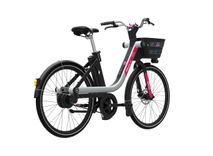What are the tools and methods that cities and regions use to measure the impact of a cycling scheme. This article dives into everything you need to know in order to create your own study to measure the modal shift to sustainable transport.
Where to start? Existing methodologies and studies that measure modal shift
Cerema Household and Long-term Studies
Cerema can help you to draw up an assessment of the travel habits of your constituents via two types of studies with proven methodologies: Household Travel Surveys (HTS) and Light Travel Surveys (LTS).
These surveys take the form of interviews, and the main difference between an EMD and an EDA is the wealth of information collected.
Indeed, an EMD collects responses from your constituents face-to-face (whereas a DEA collects them by telephone) and over a longer period of time than a DEA (20 weeks of survey versus 6 weeks for a DEA).
The aim is to compare key indicators over several years (modal shares, reasons for travel, household motorisation, etc.).
These surveys are exhaustive and allow for a precise measurement of the travel patterns of a given population. However, they cover all modes of travel, so it is in your interest to create your own dashboard measuring the modal shift of your bicycle service.





